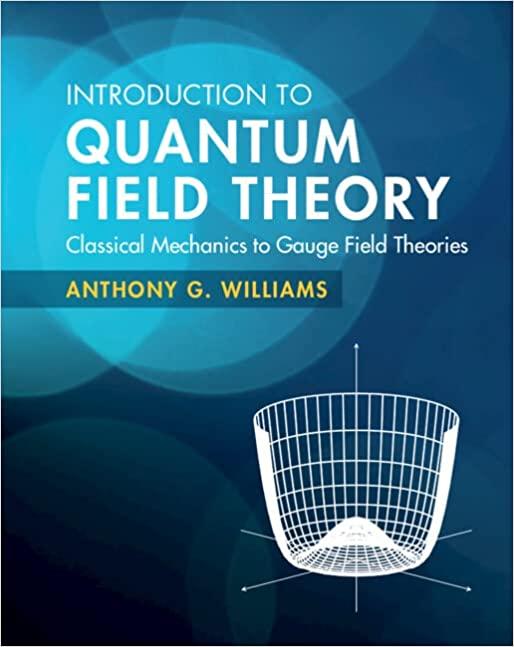A general real scalar Lagrangian density at most quadratic in the four-vector potential is (mathcal{L}=-frac{1}{2}left(partial_{mu} A_{u} partial^{mu}
Question:
A general real scalar Lagrangian density at most quadratic in the four-vector potential is \(\mathcal{L}=-\frac{1}{2}\left(\partial_{\mu} A_{u} \partial^{\mu} A^{u}+ho \partial_{\mu} A_{u} \partial^{u} A^{\mu}\right)+\lambda A_{\mu} A^{\mu}\), where \(ho, \lambda \in \mathbb{R}\).
(a) Obtain the Euler-Lagrange equations for this system.
(b) Assume plane wave solutions with the general form \(A^{\mu}(x)=C \epsilon^{\mu}(\mathbf{k}) e^{-i k \cdot x}\) and express the Euler-Lagrange equation in terms of \(\epsilon^{\mu}(\mathbf{k})\) and \(k^{\mu}\).
(c) For \(k^{2} eq 0\) we can define transverse and longitudinal projectors as \(\mathcal{T}^{\mu u} \equiv g^{\mu u}-\) \(\left(k^{\mu} k^{u} / k^{2}\right)\) and \(\mathcal{L}^{\mu u} \equiv\left(k^{\mu} k^{u} / k^{2}\right)\). Verify the properties \(\mathcal{T}^{\mu ho} \mathcal{T}_{ho u}=\mathcal{T}^{\mu}{ }_{u}, \mathcal{L}^{\mu ho} \mathcal{L}_{ho u}=\mathcal{L}^{\mu}{ }_{u}\) and \(\mathcal{T}^{\mu}{ }_{u}+\mathcal{L}^{\mu}{ }_{u}=\delta^{\mu}{ }_{u}\). Define \(\epsilon_{\ell}^{\mu} \equiv \mathcal{L}^{\mu u} \epsilon_{u}\) and \(\epsilon_{t}^{\mu} \equiv \mathcal{T}^{\mu u} \epsilon_{u}\) and so verify that \(k \cdot \epsilon_{\ell}=k \cdot \epsilon\), \(k \cdot \epsilon_{t}=0\) and \(\epsilon_{t}^{\mu}+\epsilon_{\ell}^{\mu}=\epsilon^{\mu}\).
(d) Show that there is a plane wave solution to the Euler-Lagrange equations with \(k^{2}=m_{\ell}^{2} \equiv\) \(2 \lambda /(1+ho)\) that is longitudinal, \(\epsilon^{\mu}=\epsilon_{\ell}^{\mu}\).
(e) Similarly, show that there is a plane wave solution with \(k^{2}=m_{t}^{2} \equiv 2 \lambda\), that is transverse.
(f) We say that the \(\ell\) and \(t\) modes propagate with masses \(m_{\ell}\) and \(m_{t}\), respectively. Choosing \(ho=-1\) gives \(m_{\ell} \rightarrow \infty\) so that the \(\ell\) modes \(^{6}\) cannot propagate, leaving only the \(t\) modes. Show that in this limit we recover the Proca Lagrangian density for a massive vector field given in Eq. (6.5.1) with \(m_{t}\) becoming the mass of the vector field.
Step by Step Answer:

Introduction To Quantum Field Theory Classical Mechanics To Gauge Field Theories
ISBN: 9781108470902
1st Edition
Authors: Anthony G. Williams





